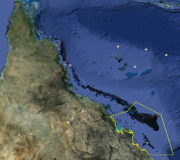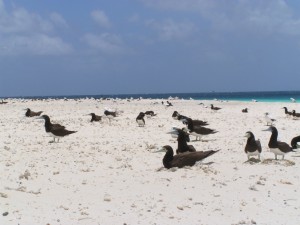NERP TE Project 9.3 - Prioritising management actions for Great Barrier Reef islands (JCU)
Project summary
Managers of the Great Barrier Reef's (GBR) 900 islands face difficult decisions when it comes to investing in conservation management. Where should they invest limited funds to achieve the best outcomes? This project aims to address this problem by developing a decision making framework for investing cost-effectively in management actions across the GBR islands.
Why this research is needed
The GBR faces a number of pressures including climate change, invasive species, fishing, industry and tourism. In the face of these threats, environmental managers need a framework with specific objectives to guide their conservation investments.
Research-user focus
The project will deliver outcomes that are useful to a range of stakeholder organisations including state and Australian Government bodies, the tourism sector and conservation planners/managers. Research-user organisations include the Queensland Government, the Department of Sustainability, Environment, Water, Population and Communities and the Great Barrier Reef Marine Park Authority (GBRMPA).
Outcomes
Working closely with GBRMPA and the Queensland Government, this project will develop a cost-effective approach for prioritising management actions across GBR islands. The approach will be broad-based and include pest control, adjustment of fire regimes, biosecurity measures and monitoring. A decision-support tool with GIS capability will help managers to identify management priorities within and between islands.
Reports, Publications and News
For more information see Project 9.3 'Prioritising management actions for Great Barrier Reef islands' on the NERP Tropical Ecosystems Hub site.
Images
Datasets

The database contains native and alien species records for National Park islands in the southern Great Barrier Reef. Attributes for each record include information on abundance, life history traits, habitat requirements, limitations of source, and relevant species information from government bodies including EPBC and NCA listings. Basic interaction information among species (alien vs. native) is also recorded. This dataset also has basic information about the islands such as area, location, and regional ecosystem types present on the island.
This project will develop a cost-effective approach for prioritising management actions across Great Barrier Reef islands to maximise conservation outcomes. The approach will be broad-based and include pest control, adjustment of fire regimes, biosecurity measures and monitoring. A decision-support tool with GIS capability will help managers to identify management priorities within and between islands.The sub-region selected for this project includes 150 islands within the Great Barrier Reef World Heritage Area from south of Mackay to Bundaberg.








